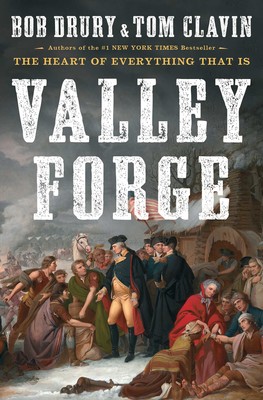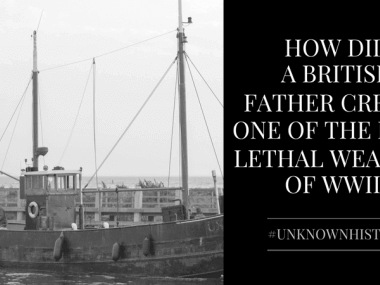The Three Sons George Washington Never Had
In the second installment in our miniseries on the heroes of Valley Forge, we learn about Washington’s surrogate sons and the impact they had on the American Revolution, and on Washington himself.
A dramatic and poignant story within the story of Valley Forge is about George Washington and his surrogate sons. He did not have children of his own, and turning 46 and married to Martha Washington, he would not. But at Valley Forge he was surrounded by three very young men totally devoted to him—one of them the Founding Father you never heard of.
Marquis de Lafayette
Let’s start with Marquis de Lafayette, all of 19 when he snuck out of his noble family in France, sailed to America, and presented himself to George Washington. George Washington was impressed by the young man, one reason being he could look him in the eye. Washington was 6’4”. The average male height at that time was 5’5”, 5’6”; Marquis de Lafayette was 6’3”. He was an idealistic, energetic young man, looking at Washington and saying “I want to join your army.” The two met when the 19-year-old, sporting a major general’s sash, brashly introduced himself to Washington in Philadelphia’s City Tavern on the last evening of July 1777. Elegant and slim, with full lips, an upturned nose, and a prematurely receding hairline, Lafayette charmed Washington with his youthful brio for poetic pronouncements as well as his ability to segue from diffident self-abasement to fervent ambition in mid-sentence. Adding to this was the cache of his physical stature. Washington invited Lafayette to join him the following morning for a tour of the Continental defenses along the Delaware River.
Buy Now

The American general was certainly not blind to the diplomatic advantages of befriending a well-connected French nobleman. Yet Washington, whose own youth was rife with romantic paeans to justice and fair play, also saw something deeper in Lafayette’s earnest devotion to American liberty.
“The happiness of America is intimately connected to the happiness of all mankind,” the marquis had written to his wife upon making landfall in the United States. Even if Washington expressed such sentiments less floridly, they were very similar to his own. By the fall of 1777, the courageous and reckless 20-year-old was a major general in the Continental Army and Washington doted on the coltish French nobleman. In the Battle of Brandywine, Lafayette was wounded. When Washington heard this, he sent a surgeon to the front with the instructions “treat him like you would treat my own son.”
Washington was reluctant to let Lafayette go when he was ordered to invade Canada. In the middle of winter 1777-1778, the French nobleman was told to go to Albany where an army would await him to go to Canada. He got as far as Albany, saw there was no army, and came back. His position back at Valley Forge helped secure the alliance with France, which made a difference to the American cause. At the Battle of Monmouth Courthouse that June, the pivotal battle of the Revolutionary War, Lafayette, George Washington, and Greene slept on their cloaks with their men, ready to resume battle. Lafayette would remain Washington’s loyal general and friend for decades, and his son would be named George Washington Lafayette. He was one of the three surrogate sons with Washington at Valley Forge.
Alexander Hamilton
The next was Alexander Hamilton. Hamilton was only 22 years old. He was born in the Caribbean and made his way to America. Washington first noticed him leading an artillery unit during the Battle of Harlem Heights. Washington was so impressed that he turned to his aids and asked who the young man was, and asked to meet him. When he did, he was impressed by his eagerness, intelligence, and passion for the American Revolution.
He became Washington’s right-hand aide. Though aching to return to the battlefield, he was His Excellency’s scribe, able to finish Washington’s sentences and generating hundreds of documents in Washington’s name with the general’s full approval. Hamilton seemed to know what Washington was thinking in the same time Washington was thinking it. Every day during the Valley Forge encampment, Hamilton was there for Washington, being his supporter and confidante, even sometimes his crutch when Washington would come close to giving into despair. It was Hamilton who composed the 13,000-word manifesto in late January 1778 that would transform both the Continental Army and the Continental Congress when Washington delivered it.
As Hamilton and John Laurens stood off to the side of Moore Hall’s great room, taking in their imposing commander in chief’s oration, it surely must have dawned on them that they were witnessing history writ large. Washington—as always, the tallest man in the room—was declaring his own colonial army obsolete, ineffective, and doomed to failure. And though neither aide left personal reminiscences about the meeting, it is easy to imagine the excitable Laurens barely able to contain himself during the scene he was witnessing, and to envision the more cerebral Hamilton calmly fixing his gaze on one delegate after another as the powerful message he had composed struck home: America needs a new modern, effective army. Hamilton played a crucial role during Washington’s presidency, including creating the nation’s financial system, until killed at 49 by Aaron Burr. He may have been president himself one day—but we’ll never know that.
John Laurens
I just mentioned John Laurens. He was one of the Founding Fathers. No one fought more heroically and believed in the cause of liberty more than Laurens. So why have most readers never heard of this hero of the revolution?
First let me talk about his eagerness to go to battle with the British. During the Battle of Germantown, the British had taken up in a house, a stone structure, so they couldn’t be burned out and they couldn’t be bombed out. Just one other man and Laurens attacked the British, and were repulsed. They attacked again, and Laurens was wounded twice before finally other soldiers prevented him from exposing himself to enemy fire again. This thoroughly impressed Washington, as maybe being little foolhardy, but showing courage.
During the battle of Germantown, Laurens had been riding with General Sullivan when in the opening moments of battle, a British ball tore through the fleshy part of his right shoulder. Ignoring the wound, he pressed on through the fog until Sullivan halted his troops outside the Chew House. One of Sullivan’s French aides, watching Knox’s cannonballs bounce off the estate’s thick walls, hatched a plan to burn the British out and tapped Laurens as his second. The two streaked across the killing field to gather straw from a nearby stable. Their arms filled with the combustible hay, they crept beneath one of the house’s ground-floor windows.
When the Frenchman ripped open what was left of the shutters, a Redcoat fired. He missed, but Laurens drew his sword and made for the window. He had nearly reached it when he was spun to the ground by another ball, this one lodging in his side. The two escaped without further injury—unless one counts the anxiety that overcame Laurens’s father. When Henry Laurens learned of his son’s wounds, he dashed off a letter pleading with John to appreciate the difference between genuine courage and reckless temerity.
John Laurens became the best friend of Alexander Hamilton when he became Washington’s third surrogate son, and he was also just 22 years old. He was born and raised in South Carolina, and he dutifully followed his father’s wishes that he become a lawyer and well-educated gentleman. However, he left studies in Europe and came to help Washington as an aide, and had a “back channel” to his father, Henry, who had become the president of the continental Congress. Henry, because of his son’s letters, became one of Washington’s biggest allies. This helped immeasurably when there was an effort to topple Washington as commander in chief.
Young Laurens also thirsted for battlefield glory. He loved to lead cavalry charges, but was given little chances to do so because he was too valuable to Washington. He was allowed the opportunity to go back to his native South Carolina and start the fight there, interrupted when he was sent overseas and to help negotiate the treaty that would eventually end the war. But the war was still raging when he came back to South Carolina in 1782, and finally, the time came for John Laurens to get the dream he had had for some time: he was going to lead a grand charge against an invading British force. He had always pictured himself on top of a horse, brandishing a sword at the head of a column of American soldiers attacking the British, and one day, when he heard of a British force coming close to his beloved Charleston, he mounted up. He had malaria; he had been bedridden for two days, but he wasn’t going to miss this opportunity. He got on his horse, collected his men, and off they went, and when they saw the British, they charged.
A bullet hit Laurens, knocked him off his horse, and killed him. He was only 27 years old. His father buried him on his plantation in South Carolina. Because of his young death, he never got to be Secretary of State, secretary of war, Senator, or congressman of South Carolina as he surely wanted to be. And that’s why John Laurens is the Founding Father you’ve never heard of.
An argument can be made that without these three young and dynamic men at Valley Forge, Washington would have given in to despair and not have been the inspiring commander in chief that he was. The relationship between Washington and Lafayette, Hamilton, and Laurens is the very personal one of the Father of His Country.





